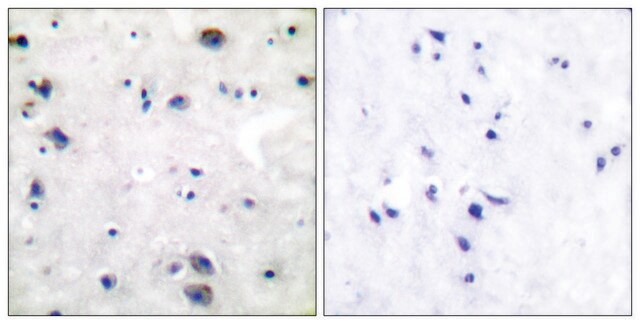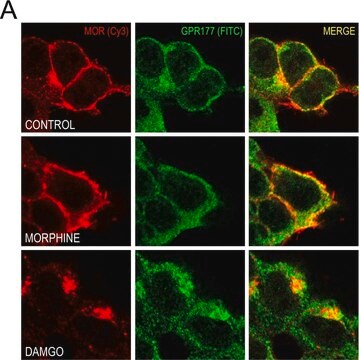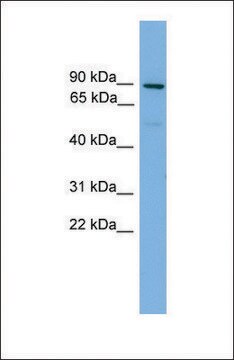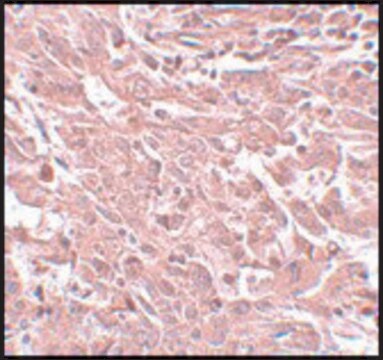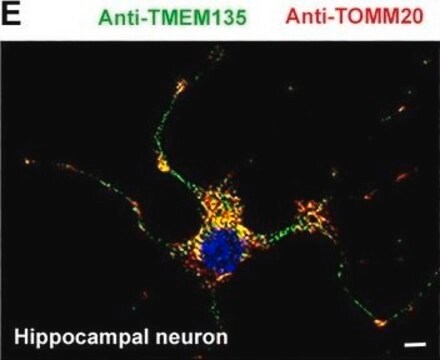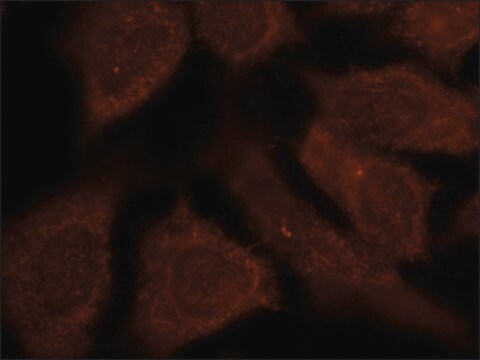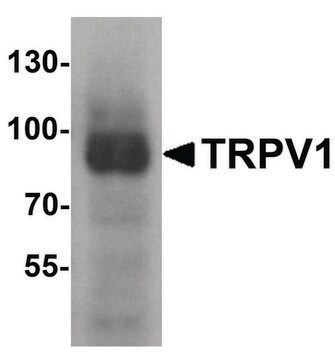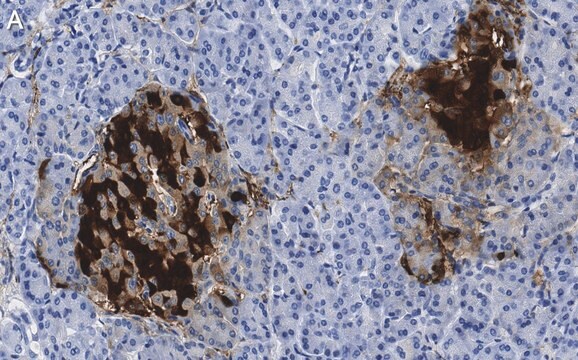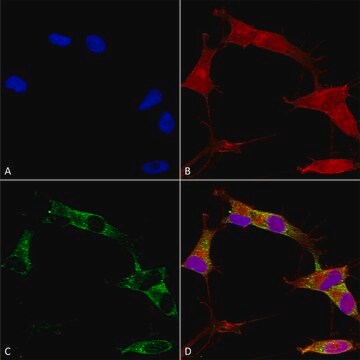SAB4300555
Anti-OPRM1 (Ab-375) antibody produced in rabbit
affinity isolated antibody
동의어(들):
Anti-KIAA0403 antibody produced in rabbit, Anti-MOR antibody produced in rabbit, Anti-MOR1 antibody produced in rabbit, Anti-OPRM antibody produced in rabbit, Anti-opioid receptor, mu 1 antibody produced in rabbit
로그인조직 및 계약 가격 보기
모든 사진(1)
About This Item
UNSPSC 코드:
12352203
NACRES:
NA.41
추천 제품
생물학적 소스
rabbit
Quality Level
결합
unconjugated
항체 형태
affinity isolated antibody
항체 생산 유형
primary antibodies
클론
polyclonal
형태
buffered aqueous solution
분자량
~80 kDa
종 반응성
mouse, rat
농도
1 mg/mL
기술
western blot: 1:500-1:1000
동형
IgG
면역원 서열
(H-P-S-T-A)
NCBI 수납 번호
UniProt 수납 번호
배송 상태
wet ice
저장 온도
−20°C
타겟 번역 후 변형
unmodified
유전자 정보
human ... OPRM1(4988)
일반 설명
The gene OPRM1 (opioid receptor μ 1) is mapped to human chromosome 6q24-q25. The gene spans a length of 200kb and contains 11 exons that yield 17 splice variants.
면역원
Peptide sequence around aa. 373-377 (H-P-S-T-A), according to the protein OPRM1.
애플리케이션
Anti-OPRM1 (Ab-375) antibody produced in rabbit has been used in Western blotting.
생화학적/생리학적 작용
The gene OPRM1 (opioid receptor μ 1) encodes a μ opioid receptor that functions in pain perception and addiction to drugs of abuse, such as cocaine, nicotine and alcohol. It serves as a target for opioid drugs, such as morphine, methadone and heroin and opioid peptides (like β - endorphin and endomorphins) and mediates their effects. Single nucleotide polymorphism in the OPRM1 gene is associated with an inclination to drug addiction and lesser response to painful stimuli.
특징 및 장점
Evaluate our antibodies with complete peace of mind. If the antibody does not perform in your application, we will issue a full credit or replacement antibody. Learn more.
표적 설명
Inhibits neurotransmitter release by reducing calcium ion currents and increasing potassium ion conductance. Receptor for beta-endorphin.
물리적 형태
Solution in phosphate-buffered saline containing 0.02% sodium azide and 50% glycerol
면책조항
Unless otherwise stated in our catalog or other company documentation accompanying the product(s), our products are intended for research use only and are not to be used for any other purpose, which includes but is not limited to, unauthorized commercial uses, in vitro diagnostic uses, ex vivo or in vivo therapeutic uses or any type of consumption or application to humans or animals.
적합한 제품을 찾을 수 없으신가요?
당사의 제품 선택기 도구.을(를) 시도해 보세요.
Storage Class Code
10 - Combustible liquids
WGK
WGK 1
Flash Point (°F)
Not applicable
Flash Point (°C)
Not applicable
시험 성적서(COA)
제품의 로트/배치 번호를 입력하여 시험 성적서(COA)을 검색하십시오. 로트 및 배치 번호는 제품 라벨에 있는 ‘로트’ 또는 ‘배치’라는 용어 뒤에서 찾을 수 있습니다.
Association of time-dependent changes in μ opioid receptor mRNA, but not BDNF, TrkB, or MeCP2 mRNA and protein expression in the rat nucleus accumbens with incubation of heroin craving.
Theberge FR, et al.
Psychopharmacology (Psychopharmacologia), 224(4), 559-571 (2012)
Ying Zhang et al.
The Journal of biological chemistry, 280(38), 32618-32624 (2005-07-28)
As a primary target for opioid drugs and peptides, the mu opioid receptor (OPRM1) plays a key role in pain perception and addiction. Genetic variants of OPRM1 have been implicated in predisposition to drug addiction, in particular the single nucleotide
Raymond F Anton et al.
Archives of general psychiatry, 65(2), 135-144 (2008-02-06)
Naltrexone hydrochloride treatment for alcohol dependence works for some individuals but not for everyone. Asn40Asp, a functional polymorphism of the mu-opioid receptor gene (OPRM1), might predict naltrexone response. To evaluate whether individuals with alcoholism who are heterozygous (Asp40/Asn40) or homozygous
Shinya Kasai et al.
Pharmacogenomics, 12(9), 1305-1320 (2011-09-17)
The µ-opioid receptor is a primary target for clinically important opioid analgesics, including morphine, fentanyl and methadone. Many genetic variations have been identified in the human µ-opioid receptor MOP gene (OPRM1), and their implications have been reported in the effects
Jörn Lötsch et al.
Anesthesiology, 97(4), 814-819 (2002-10-03)
Some, but not all, patients with renal dysfunction suffer from side effects after morphine administration because of accumulation of the active metabolite morphine-6-glucuronide (M6G). The current study aims to identify genetic causes that put patients at risk for, or protect
자사의 과학자팀은 생명 과학, 재료 과학, 화학 합성, 크로마토그래피, 분석 및 기타 많은 영역을 포함한 모든 과학 분야에 경험이 있습니다..
고객지원팀으로 연락바랍니다.